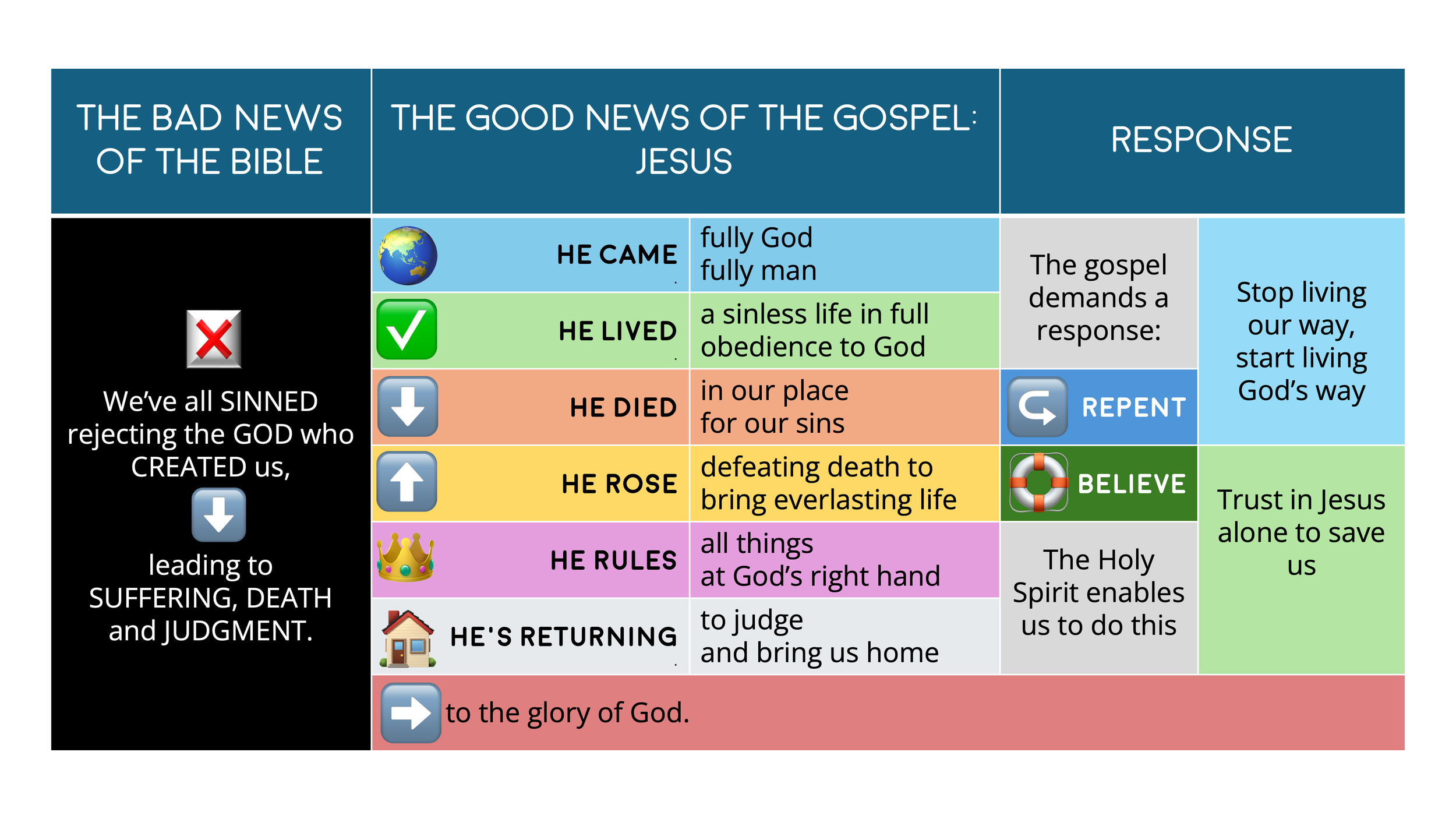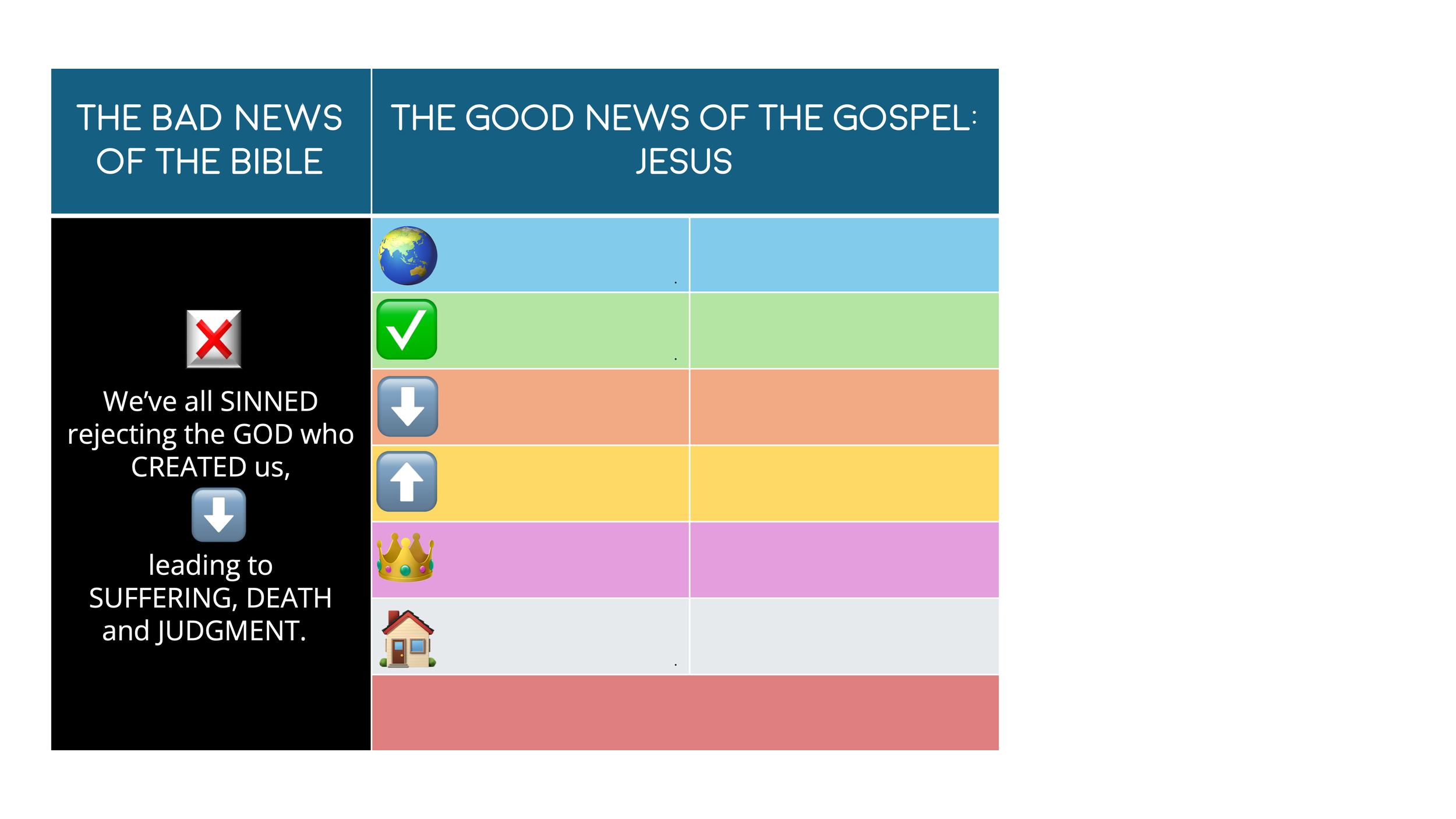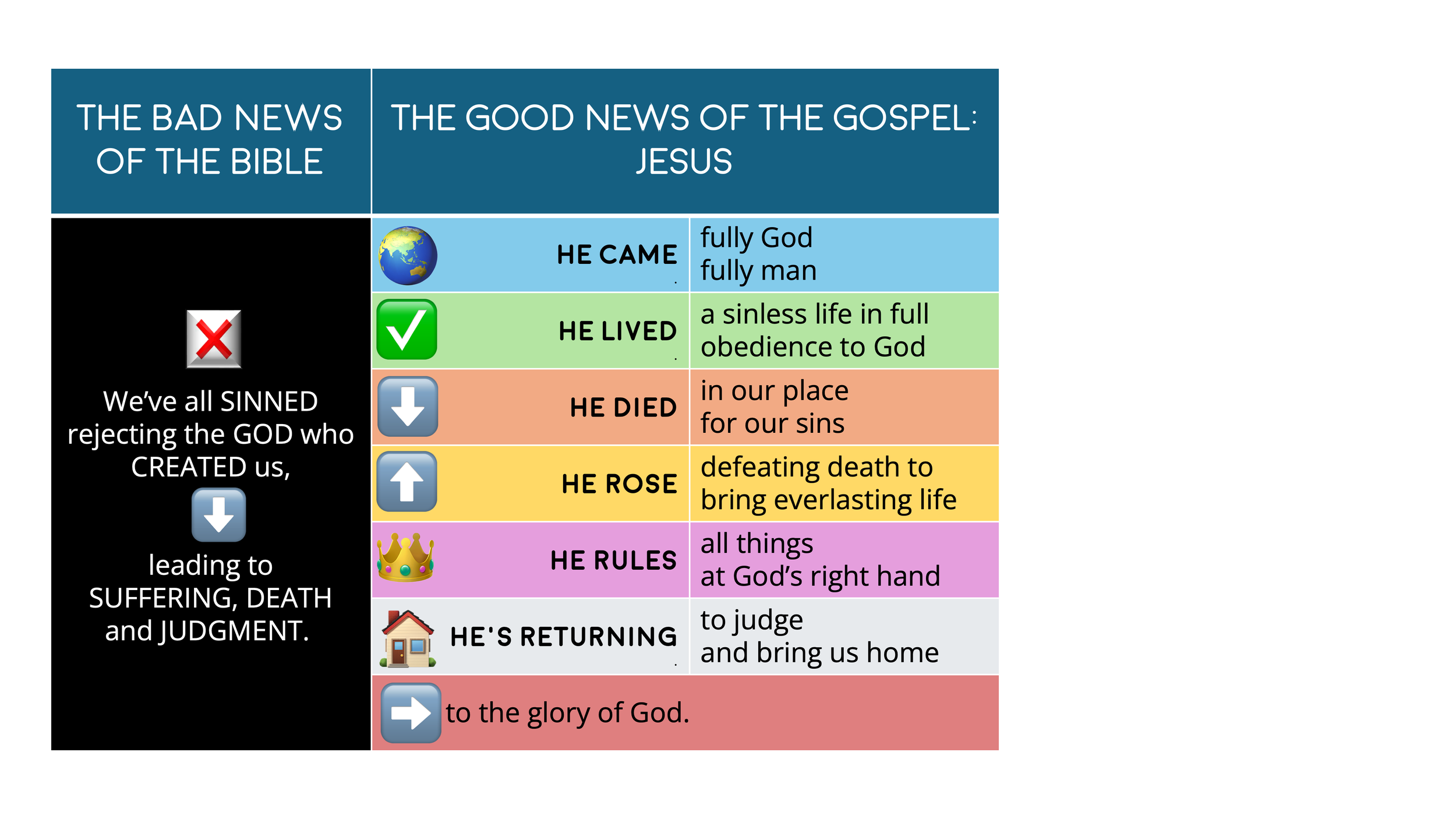The Gospel According to Emojis
A few months ago, I was reading through some responses to a questionnaire I gave to the youth at my church.
One of the questions asked, “What is the gospel?”
Many of the answers said, “Matthew, Mark, Luke and John”, while a couple said that the gospel equals “good news”.
These answers aren’t wrong. Matthew, Mark, Luke and John are gospels. The word “gospel” does mean “good news”. But what actually is the “good news” contained in the Gospels of Matthew, Mark, Luke and John?
It occurred to me that I haven’t taught my youth very explicitly what we mean by “the gospel”. We mention “the gospel” all the time. But it’s been a while since we did a deep dive.
There are plenty of gospel summaries around, some of them better than others. However, my favourite summaries tend to be pretty tricky for youth to memorise. I wanted something that was really easy to memorise, with really easy hooks. Something that we can recap every now and then on Friday nights or Sunday mornings. Something that won’t take too long as well.
Some of my favourite gospel summaries are also a bit loose on the doctrine of the Trinity and on Christ’s divinity, so much so that those who deny Christ’s divinity could still affirm much of what they have to say. I wanted a gospel summary that those who deny Christ’s divinity can’t use.
So what I came up with was this:
The Bad News of the Bible
I start off with the “bad news of the Bible”. If the youth don’t understand the bad news, they won’t appreciate the good news. First up, we put these two emojis on the screen to jog their memories. I find that this is usually enough to help them out.
Even if they don’t get it word for word, they can usually articulate a) that we’ve sinned, b) that sin means rejecting God, and c) sin has terrible consequences. More on this in my next post.
The Good News of the Gospel
Next up, I display the heading “the good news of the gospel: Jesus” and these 6 emojis.
I ask them what the good news of the gospel is. After one week, they all knew it had to do with Jesus. Most of them could remember most of the headings.
He came (marked by the 🌎 emoji because Jesus came to earth).
He lived (marked by the ✅ emoji because he lived a perfect life).
He died (marked by the ⬇️ emoji because he descended to death).
He rose (marked by the ⬆️ emoji because … Jesus rose).
He rules (marked by the 👑 emoji because Jesus now wears the crown)
He’s returning (marked by the 🏠 emoji because Jesus will take us to be with him at a new home. I originally had the ☁️ emoji because Jesus will return with the clouds of heaven. But people found that a bit confusing and weird)
I’ve based these headings on passages like Acts 2:22–36, 1 Corinthians 15:1-11 and Philippians 2:5-11. None of them mention all six things, but they do if you put them all together.
Philippians 2:11 also mentions that all this happens for God’s glory. So I add this heading too:
To the glory of God (marked by the ➡️ emoji, to indicate that Jesus did all of this to point to God’s glory)
These headings are not the actual message of the gospel. They are headings. But once the youth remember the headings, it’s much easier to remember the significance of each heading.
Once we’ve covered the headings, I ask them to unpack each heading for me.
They don’t always get it right word for word, but I’ve been impressed how quickly they’ve picked it up.
Response
Next up, we talk about the response to the gospel.
I’ve gone with “repent” and “believe”, following Jesus’ lead in Mark 1:15.
I’ve gone with the ↪️ emoji because repentance basically means chucking a u-turn with your life and your mindset. I define repentance as “Stop living our way, start living God’s way.” More on that in my post on repentance.
I found it hard to think of an emoji for “believe”. I went with the 🛟 emoji because we’re trusting Jesus to save us, as someone trusts a lifesaver to save us with one of these. I define “believe” as “trust in Jesus alone to save us”. This wording is strategic. More on that in my post on believing.
I reckon its really important to acknowledge the role of the Holy Spirit in salvation. So, I’ve also included that “the Holy Spirit enables us to do this”.
Coming up next: what is the bad news of the Bible?





